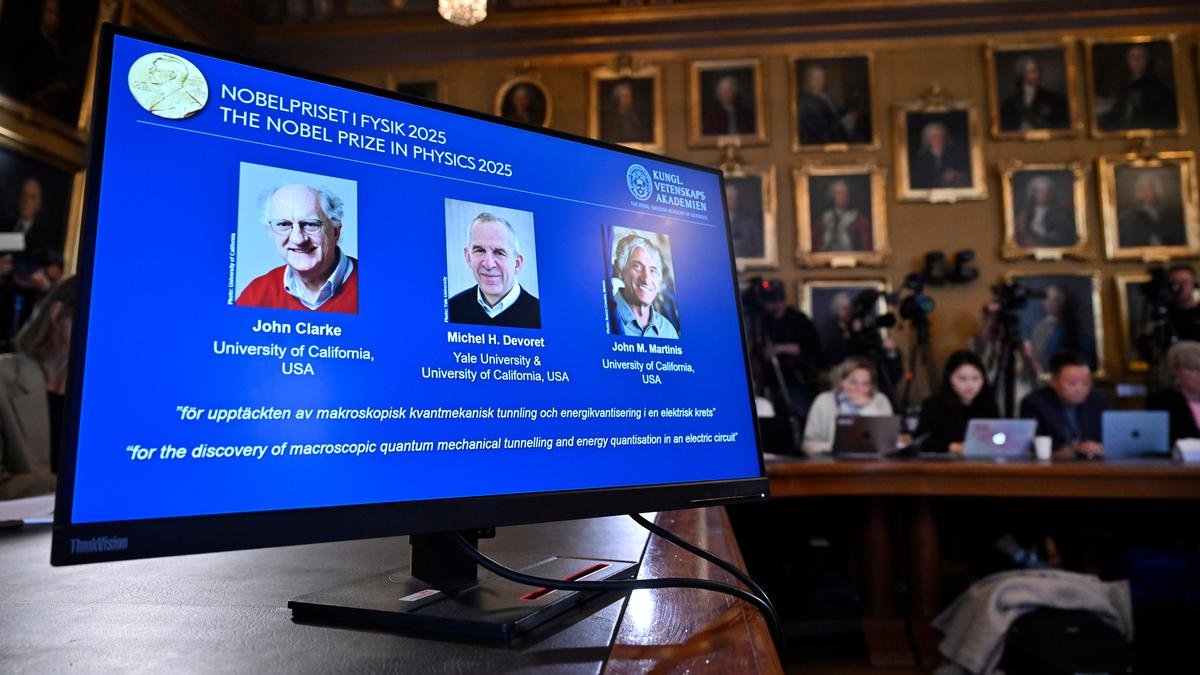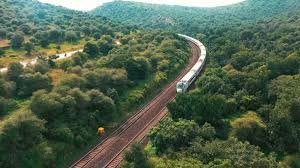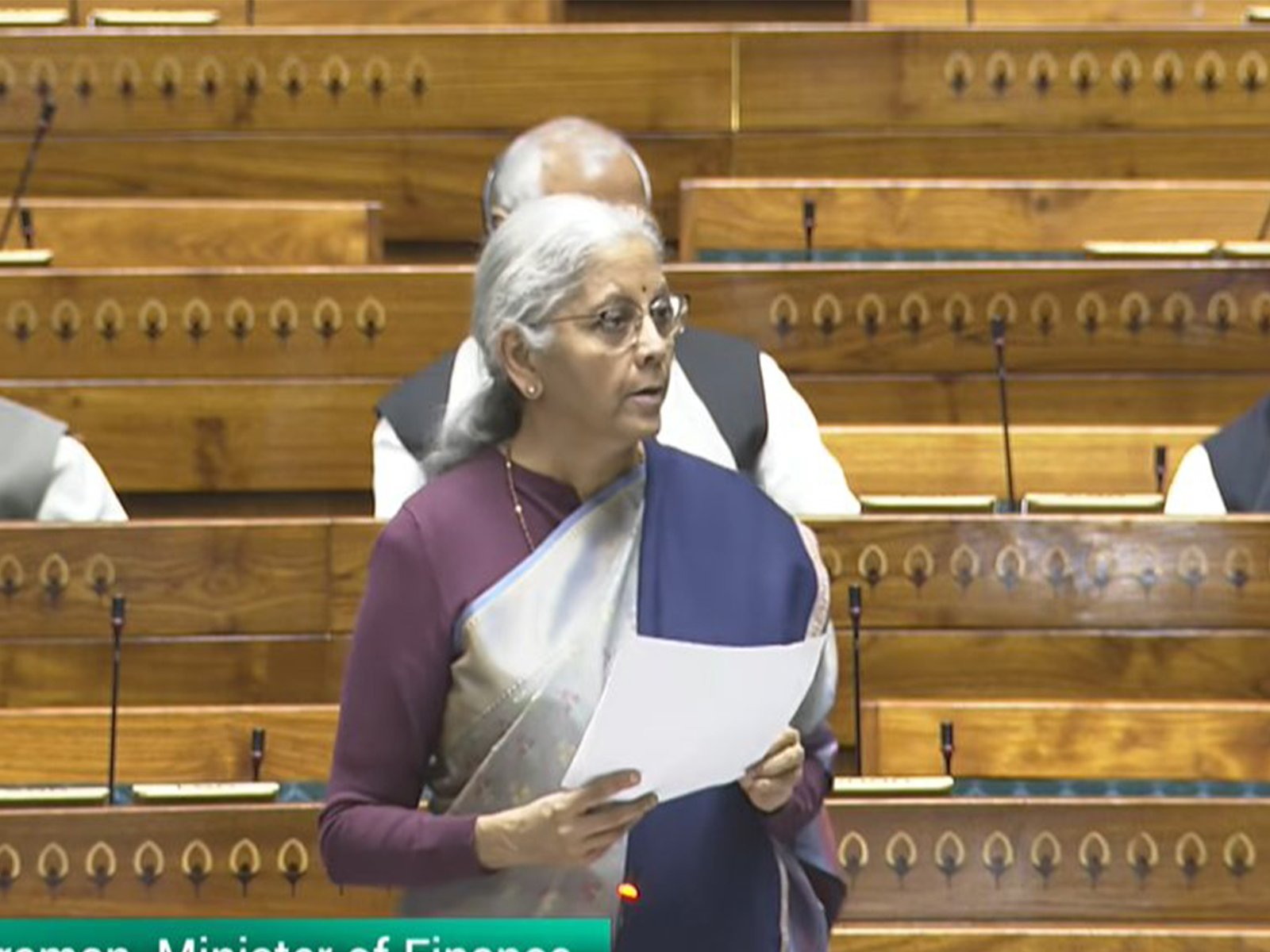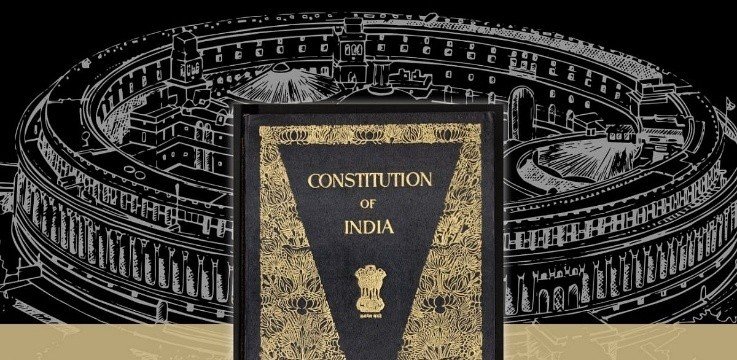Why in the News?
The 2025 Nobel Prize in Physics was awarded to John Clarke, Michel Devoret, and John Martinis. They proved in the 1980s that the strange laws of quantum mechanics do not just apply to tiny particles like electrons or atoms but can also apply to entire electrical circuits visible to the eye. Their experiments opened the way for modern quantum computers and many other technologies.
Key Highlights
- What is Quantum?
- The word “quantum” means the smallest possible unit of energy or matter that cannot be divided further. In quantum mechanics, energy levels are discrete (like steps on a ladder) rather than continuous (like a ramp). This is different from classical physics, where energy can vary smoothly.
- The Experiments of the 1980s
- In the 1980s, Clarke, Devoret, and Martinis performed experiments at the University of California.
- They studied a special circuit called a Josephson junction. This is made of two superconductors (materials that carry current without resistance) separated by an ultrathin insulating barrier.
- What Classical Physics Predicted
- According to classical physics, current flowing in this system should get stuck unless it has enough energy to cross the barrier.
- In other words, without sufficient energy, the current could not pass through.
- The Quantum Surprise
- At extremely low temperatures (near absolute zero), something amazing happened.
- The current did not need extra energy. Instead, it “tunnelled” through the barrier.
- This phenomenon is called Quantum Tunnelling – a uniquely quantum effect where particles or currents pass through barriers they should not cross in classical physics.
- Circuits Behaving like Particles
- The researchers also found that the entire circuit behaved as if it were a single giant particle.
- Instead of having a continuous range of energies, the system had discrete energy levels (like steps on a staircase).
- This was proof that quantum laws applied to macroscopic objects (big enough to see).
- Ensuring the Results Were Genuine
- To ensure these effects were not due to experimental error or outside noise, the scientists carefully shielded the circuits from stray microwave radiation.
- The scientists proved that in a superconductor, trillions of electrons move together in such perfect coordination that they behave like a single object, and this collective behaviour can be described by just one quantum rule i.e., superconducting phase difference.
- Superconducting phase difference: The flow of current across the Josephson junction depends on the quantum phase difference between the two superconductors.
- Technological Applications (Modern Impact)
- Their discovery laid the foundation for many modern technologies:
- Superconducting qubits – the heart of today’s leading quantum computers.
- Quantum magnetometers (SQUIDs) – devices that measure extremely weak magnetic fields.
- Their discovery laid the foundation for many modern technologies:
- Quantum voltage standards – used for precise electrical measurements.
- Single-photon detectors – used in astronomy and biomedical imaging.
- Today’s Challenge
- The question today is not whether macroscopic quantum behaviour exists, but how to preserve it for practical use.
- Quantum states are very fragile and can collapse if disturbed by the environment. This problem is called Quantum Decoherence.
- Current research focuses on:
- Developing better materials with fewer energy losses.
- Improving cryogenic (ultra-low temperature) control systems.
- Designing hybrid architectures that combine superconducting circuits with light (photonic systems), mechanical devices, or spin-based systems.
- The Larger Lesson
- When Clarke, Devoret, and Martinis began their experiments, they were simply curious about whether quantum mechanics applied to large systems.
- No one at that time imagined their work would help build quantum computers decades later.
- Their discovery shows how curiosity-driven basic science can lead to unexpected technological revolutions and bring prestige to the countries that support such research.
| Superconducting Qubit 1. A quantum bit (qubit) made using superconducting circuits. 2. Stores and processes quantum information. 3. Used in quantum computers developed by companies like Google and IBM. |
Implications
- Scientific: Proved that quantum mechanics applies to macroscopic systems, not just atoms.
- Technological: Enabled quantum computing, ultrasensitive detectors, and precision measurement tools.
- Research Direction: Shifted focus from proving quantum effects to preserving them for applications.
- Policy: Highlights the importance of investing in basic research, which can later power revolutions in technology.
- India’s Context: Strengthens the case for India’s National Quantum Mission to develop indigenous quantum technologies.
Conclusion
The Nobel Prize 2025 celebrates a discovery that bridged the gap between tiny quantum particles and visible macroscopic systems. By showing that entire circuits could follow quantum laws, the laureates opened the door to quantum computing and advanced technologies. Their work is a reminder that fundamental curiosity-driven science can lead to revolutionary applications.
| EnsureIAS Mains Question Q. The 2025 Nobel Prize in Physics has been awarded for demonstrating macroscopic quantum effects in circuits. Discuss the scientific and technological significance of this discovery. How can India leverage such breakthroughs for its National Quantum Mission? (250 Words) |
| EnsureIAS Prelims Question Q. With reference to the 2025 Nobel Prize in Physics, consider the following statements: 1. The laureates proved that superconducting circuits can exhibit macroscopic quantum behaviour. 2. Josephson junctions are fundamental components in superconducting qubits used in quantum computers. 3. Their experiments showed that energy levels in such circuits are continuous, like in classical systems. Which of the statements given above is/are correct? Answer: A (1 and 2 only) Statement 1 is correct: The discovery proved that macroscopic superconducting circuits exhibit quantum behaviour. Statement 2 is correct: Josephson junctions are indeed the building blocks of superconducting qubits. Statement 3 is incorrect: The experiments showed discrete energy levels, not continuous ones, confirming quantum mechanical rules. |
Also Read | |
| UPSC Foundation Course | UPSC Daily Current Affairs |
| UPSC Monthly Magazine | CSAT Foundation Course |
| Free MCQs for UPSC Prelims | UPSC Test Series |
| ENSURE IAS NOTES | Our Booklist |





